The squat rack is one of the few pieces of equipment that can train every major muscle group. Here’s a look at the best back exercises you can do with a squat rack, including benefits and a sample workout.
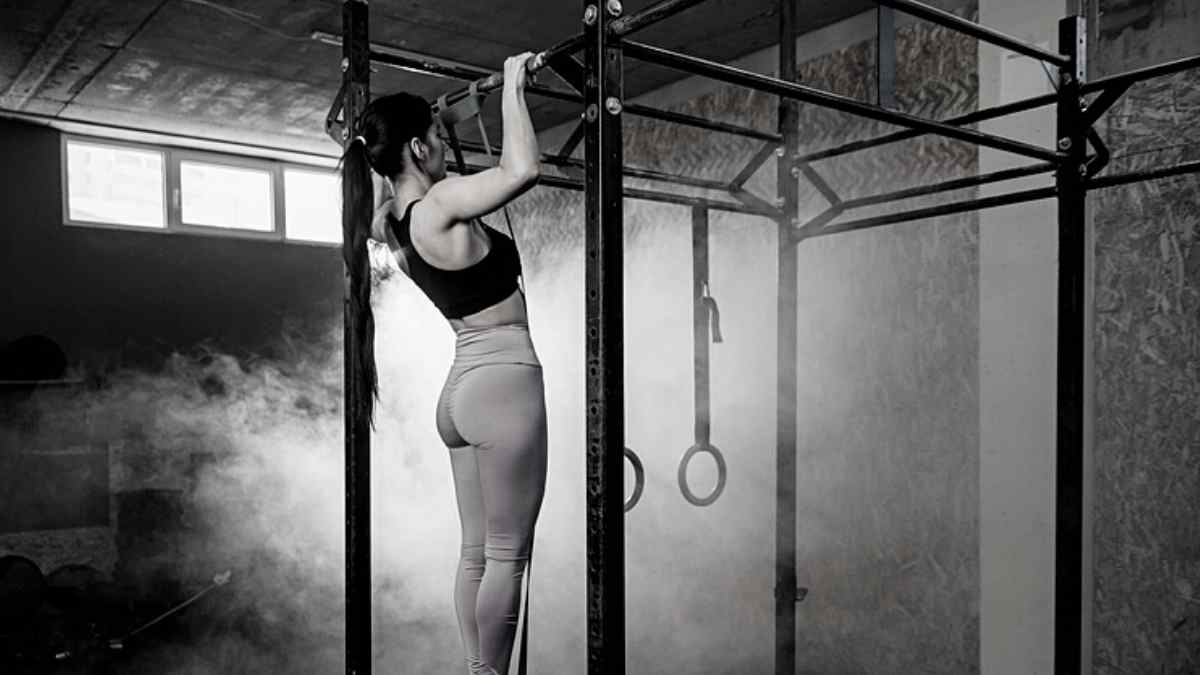
Get ready to step up your Back Day training sessions using nothing more than a squat rack and a barbell!
Squat racks are incredibly reliable and versatile, possibly the one piece of equipment that is capable of doing it all.
Thanks to the many attachments for squat racks available, you can transform it from a simple rack into a pull-up bar, dip station, bench press, curl machine, and so much more.
A squat rack will be an absolute game-changer when it comes to training your upper and lower back, as you’ll see below.
We’ve got a truly excellent assortment of squat rack back exercises you can do to dial up the intensity of your next Back Day training session.
Let’s get to it.
The Benefits of Using a Rack on International Back Day
Typically, squat racks are used for, as their names suggests, squats.
But it turns out they can also be quite beneficial for your Back Day training sessions for a number of reasons:
? Benefit 1: Adjustable Rack
One of the things I love about training on Back Day using the squat rack is the ability to raise or lower the cradle where I rack my weights. This makes it safer to do a number of exercises (which you’ll see below).
For example, with rack pulls, because I’m not pulling the weight off the floor but instead from the elevated rack, the majority of the emphasis is on the back, with far less leg engagement.
The rack lets me set the barbell to just the right height for any exercise I’m doing.
? Benefit 2: Greater Safety and Stability
With a lot of exercises—including squats, lunges, and deadlifts—there’s the risk of stumbling or losing balance.
It happens even to more advanced lifters from time to time, though it’s a problem far more common to newbies.
Thanks to the squat rack’s sturdy bars, you’ve got a stable platform to lean against your catch yourself on in case you tilt or wobble.
Then there’s the fact that you can set the rack to whatever height suits you best, and allows you to re-rack the weights in a hurry if you’re unable to complete the last set.
Training with a rack like this is much safer for those who are solo training without a gym buddy or trainer.
? Benefit 3: Versatile Design
With any squat rack or power rack, you have the option to add accessories and attachments to expand the rack’s capabilities.
For example, adding a bar across the top lets you convert it into a pull-up bar, or securing a landmine attachment to one of the posts lets you do landmine exercises (which I love!).
You can also hang resistance bands and other resistance training tools from the top of the cage, further expanding the number of exercises you can do with the rack.
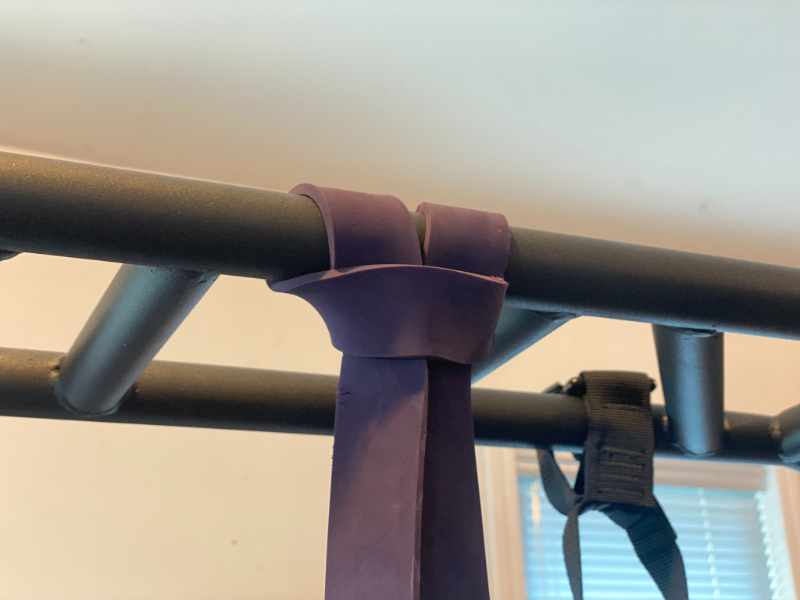
(Banded lat pulldowns, for example, are one of my top activation exercises that I do with my squat rack.)
Squat racks are one of the most versatile and multi-functional pieces of gym equipment around, so they’re an ideal choice for any home gym.
Time to dive into the best squat rack exercises you can do to target your back like a boss!
Best Squat Rack Back Exercises
? Exercise 1: Pull-Ups
Quelle surprise, right?
Pull-ups are the BEST bodyweight exercise you can do for strong back muscles.
They train not only your lats and traps, but also your deltoids, rhomboids, biceps, and forearms. There’s even some lower back and core engagement!
The great thing about using the squat rack for pull-ups is that you don’t need a separate pull-up bar—simply secure a bar across the rack’s top, and you’re good to go.
See also: The Best Squat Racks with Pull-Up Bars (and How to Choose)
If you’re not quite strong enough to do pull-ups, you can give yourself an “assist” by racking a barbell just high enough to push off against it with your toes as you complete each pull-up rep.
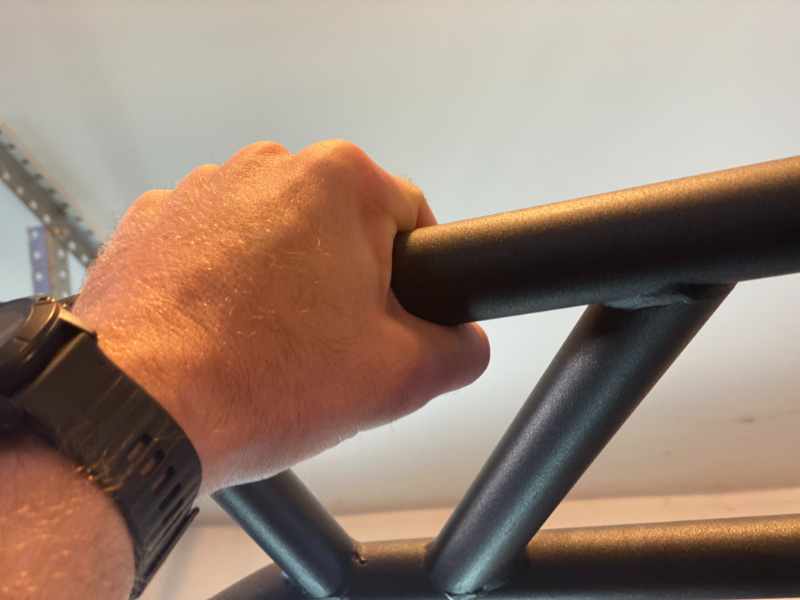
There are also some excellent pull-up bar assist bands that can help you master technique and build strength as you progress to bodyweight pull-ups.
Pull-ups are a true measure of your functional fitness, and should be one of your first lifts in any Back Day training session.
To perform this exercise:
- Grip the bar across the top of the squat rack. Grab the bar just beyond shoulder width apart, with an overhand grip, palms facing away from your body. (Chin-ups, which use an underhand grip with your palms facing toward you, place more emphasis on your biceps than back.)
- Draw in a deep breath, then exhale explosively as you pull your body up toward the bar.
- Focus on “pulling from your elbows” rather than your hands. This will maximize back engagement rather than working your forearms and biceps.
- Pull up until your chin clears the bar.
- Inhale as you lower yourself slowly and under control back toward the ground. Do not drop or swing, but descend under control.
- Lower until your arms are fully extended. Pause at the bottom for a 1-count.
- Repeat as desired.
? Exercise 2: Rack Pull
Rack pulls are very similar to deadlifts, but they focus entirely on your back with very little leg engagement.
This is because with deadlifts, you have to lift the weight from the floor, but rack pulls involve lifting the weight from roughly knee height.
(For more on the rack pull, check out this comprehensive guide on the differences and benefits of rack pulls vs deadlifts.)
The elevated starting point reduces how far you have to bend over and lets you target your back primarily.
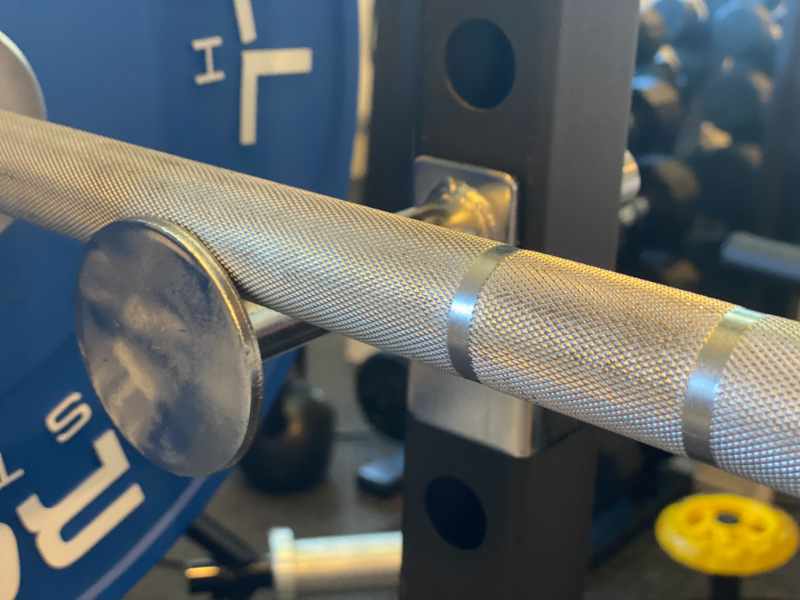
They’re excellent for building the back muscles you’ll use to perform deadlifts, helping you to target any weak spots in your form or posture.
To perform this exercise:
- Set the barbell at roughly knee level—slightly above or below, depending on the length of your arms and how far you went to bend forward. Load with your desired weight.
- Stand directly in front of the barbell, bend forward, and grip the bar in an overhand grip. Draw in a deep breath and tense your core muscles.
- Exhale explosively as you pull the bar off the rack and stand straight up. Use only your back muscles; keep your arms from pulling to minimize shoulder and bicep engagement.
- Pause at the top for a 1-count, then lower slowly and under control to re-rack the weight.
- Inhale at the bottom, and pause before your next rep.
- Repeat as desired.
? Exercise 3: Bent Over Rows
Bent over rows are an amazing upper and lower back exercise.
Because you’re in a bent-over position, your spinal muscles have to engage to maintain a strong lower back throughout the exercise.
With every rowing motion of pulling the weight to your chest, you work your “pull” muscles, including your lats, traps, rhomboids, delts, and biceps.
It’s a truly effective exercise you’d do well to include in every Back Day workout!
To perform this exercise:
- Set the barbell to waist height. Load the weight as desired.
- Lift the barbell off the rack and take two steps backward.
- Inhale as you bend forward at the waist. Extend your arms so the weight is hanging down near your feet.
- Tense your back and core muscles and exhale explosively as you row the weight up toward your chest. Pull until your elbows extend behind your back.
- Lower slowly and under control to full extension once more.
- Pause at the bottom for a 1-count.
- Repeat as desired.
? Exercise 4: Landmine Rows
The landmine attachment is one of the most useful accessories you can install on your squat rack.
With just this one add-on, you open up a ton of different exercises you can do to train virtually every part of your body—including, of course, your back.
Landmine rows allow you to lift a lot of weight while reducing the direct load on your back.
You’ll find the lever-and-fulcrum-style exercise does an amazing job of targeting your upper back, biceps, and shoulders.
See also: 6 Best Landmine Exercises (Plus Benefits and Muscles Worked)
Add it into your Back Day training sessions to unleash some real growth.
To perform this exercise:
- Slide one end of a barbell into the landmine attachment. Load the other end with your desired weight.
- Stand facing away from the squat rack, with the barbell between your legs.
- Bend, grip the barbell firmly in both hands, and stand up so the weight is hanging down between your legs with your arms extended.
- Inhale, then exhale explosively as you row the barbell upward. Be very aware that you’re pulling a solid steel bar toward potentially sensitive body parts between your legs. Pay close attention to your form to avoid hitting anything delicate. Stop before you make contact!
- Inhale as you extend your arms once more and lower the bar.
- Pause at the bottom for a 1-count.
- Repeat as desired.
? Exercise 5: Good Mornings
Good mornings are an amazing lower back exercise that also helps to target your glutes and hamstrings.
See also: 5 Best Squat Rack Exercises for Glutes (and Benefits of Glute Training with a Rack)
By training all three of these muscles together, you can strengthen the connection between your core and lower body, which makes that connection all the more resilient and less prone to injury.
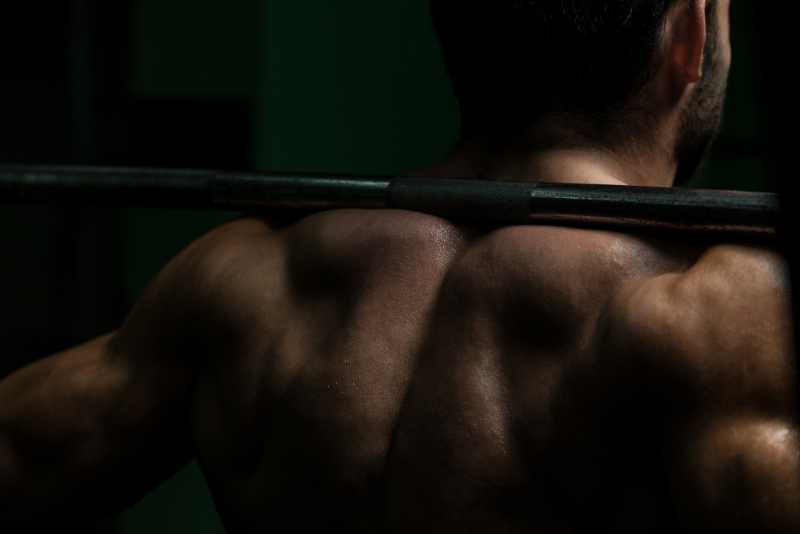
Trainees with a history of lower back problems will definitely want to incorporate this exercise into their routine—but carefully so as not to re-exacerbate an old injury!
To perform this exercise:
- Set the barbell to shoulder height on the rack. Load your weight as desired.
- Get underneath the barbell, making sure it’s resting across the backs of your shoulders. Lift the bar from its rack and take two large steps backward.
- Bend your legs slightly and keep your knees soft as you hinge at the waist to bend forward. Try to keep your legs as immobile as possible. Inhale as you lower your torso toward the floor.
- Stop once your torso is parallel to the floor.
- Exhale explosively as you rise from bent-over to straight-upright position. At the top, thrust your hips forward to engage your glutes and lower back.
- Pause at the top for a 1-count.
- Repeat as desired.
Want to get even more back exercises from your squat rack?
Consider investing in lever arms (also known as jammer arms).
Lever arms can be used for a wide variety of exercises and movements, including bent-over rows and seated ISO rows (sort of like a Hammer Strength ISO Row machine).
This article goes into greater depth on the exercises you can do with lever arms and their benefits.
Sample Back-Focused Squat Rack Workout
Let’s put it all together into one kickass back workout using the squat rack back exercises I shared above:





By the end of this training session, both your upper and lower back muscles will be DONE!
The Bottom Line
The squat rack likely isn’t the first piece of equipment that pops into your head when thinking about your Back Day training sessions, but as you’ve seen above, it can be quite the useful choice.
You’ve got many options for turning the leg-focused station into a truly versatile, multi-functional solution for working out your entire body—not just your upper back, but lower back, shoulders, biceps, and forearms.
Try incorporating these exercises into your next Back Day workout, and take your back muscle and strength to the next level.
More Stuff Like This
5 Chest Exercises You Can Do with a Squat Rack (Plus Sample Workout). Squat racks are for much more than just huge lower body lifts–you can also use them to maximize training your chest. Here are the five best chest exercises you can do using your squat rack on International Chest Day.
6 Best Power Racks with Lat Pulldown. Looking to add a power rack with a lat pulldown attachment to your home gym? Here is a breakdown of the best squat racks with lat pulldown for every gym and budget.
7 Best Exercises You Can Do with a Squat Rack (Plus a Sample Full-Body Workout). Squat racks are an essential tool for tackling all of your favorite lifts more safely. Here’s a look at the best exercises you can do with a squat rack, plus a sample workout routine for the next time you step inside the rack.